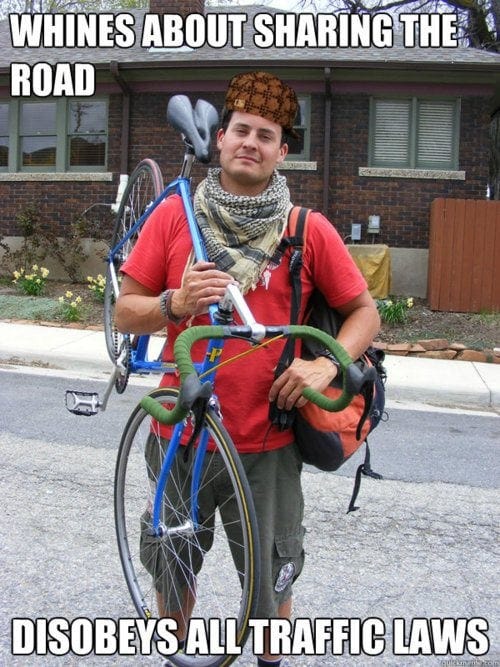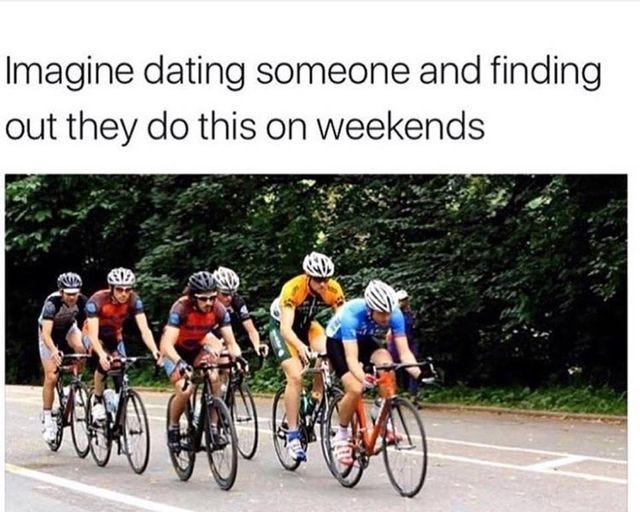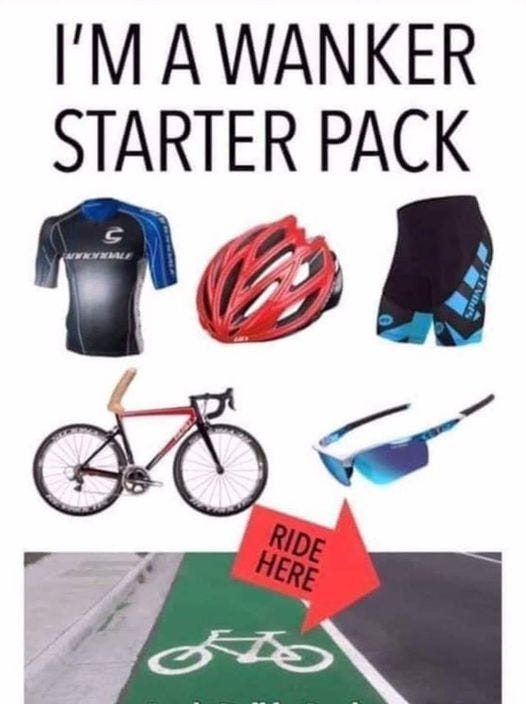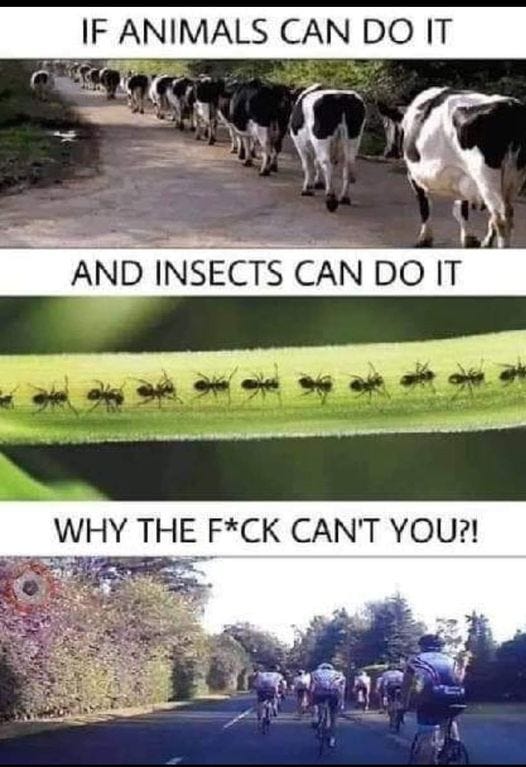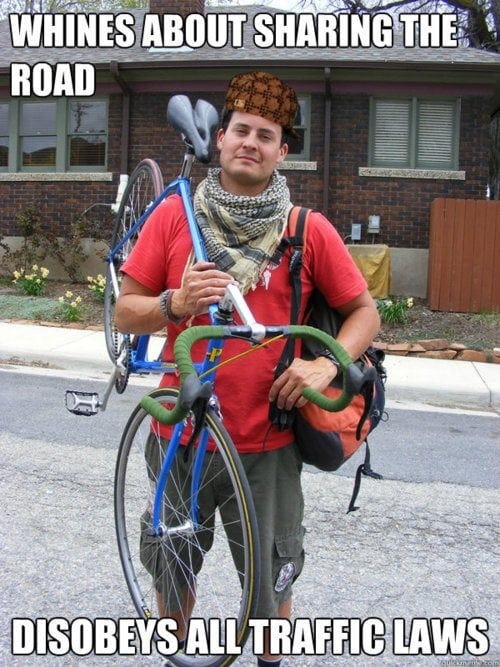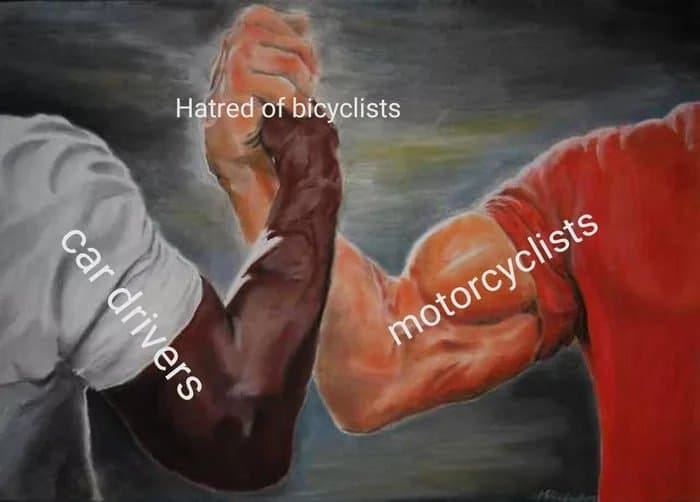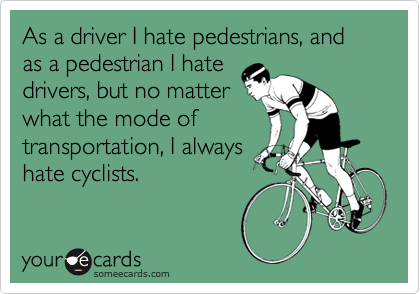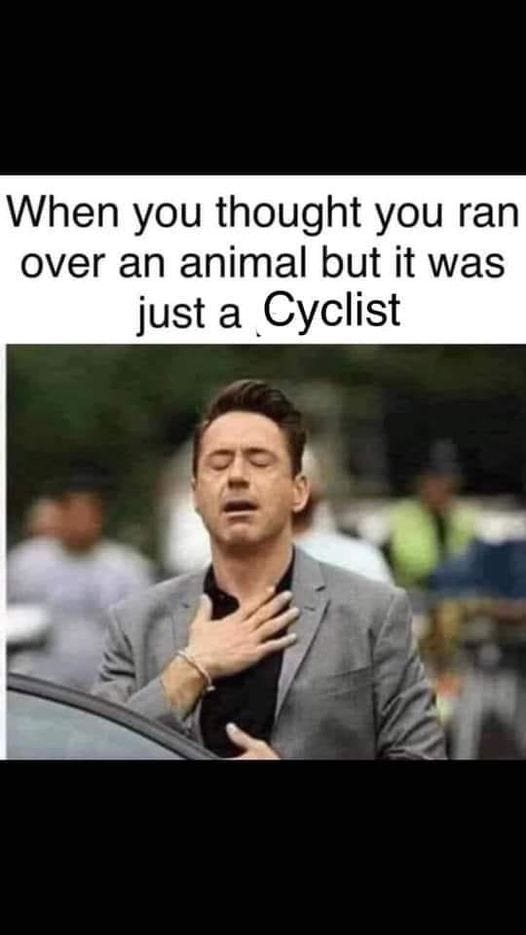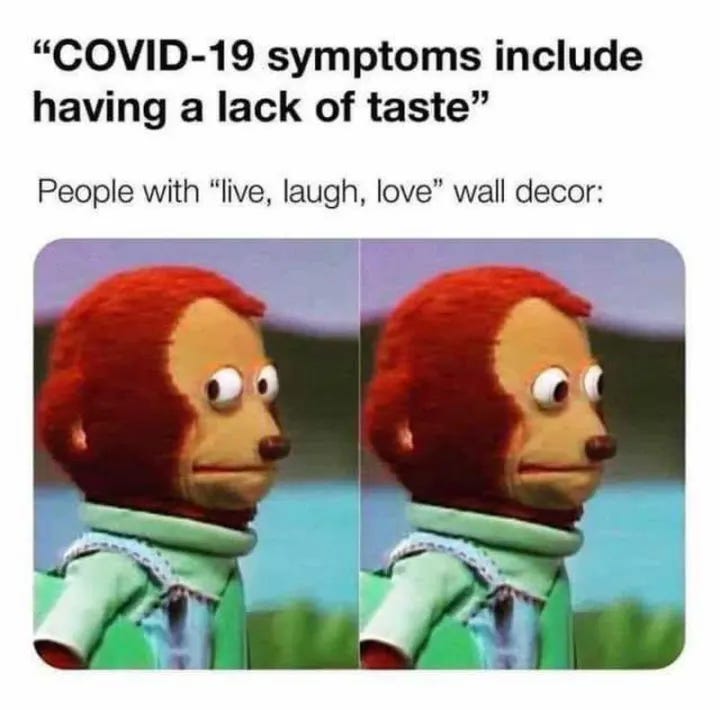It took me 27 years to get hit by a car on my bike for the first time. It’s remarkable it took this long, given I’d been commuting via the tenuous alliance of my always trustworthy Canondale with the often untrustworthy BART for five years at that point. I’d logged hundreds of miles and thousands of hours on that bike before I ended up on the business end of a car’s bumper. I can remember all of the specifics about that evening in the way that I’m sure shark attack victims can remember how the sun and the waves were before a Great White decided investigate their surfboard mouth-first.
I was heading home from Imperfect Foods headquarters in the Bayview neighborhood of San Francisco. I was headed up Evans Street, an unremarkable and potholed capillary that connects the throbbing arteries of Cesar Chavez and 3rd St together. The sun was going down but was still out. I had my lights on just in case. I wasn’t making an unprotected turn, swerving around cars, or listening to a podcast with both earbuds in. I wasn’t even running a red light or a stop sign; in fact I had a green and was going straight ahead uphill since I had the right of way. That’s when an oncoming SUV driven by a distracted and exhausted looking forty-something woman decided to make a left turn without looking first. As I saw her careen out of her lane and into mine I realized with growing horror her new trajectory was bringing her plus a few thousand pounds swiftly and directly onto my path.
The cliches are true. Time does slow down. In those tender nanoseconds I could feel my pre-frontal cortex teaming up with the previously dormant parts of my brain to workshop a survival strategy in real time. The reptilian calculus of fight, flight, or freeze happened virtually instantly and landed on the middle option. Perched on top of my kidneys, those in charge of my adrenal glands decided to empty the clip, flooding my veins with a natural steroid to power me through what needed to happen next. Quads pumping desperately I tried to power myself out in front of the path of the car so that I could try to avoid a collision with a burst of extra speed, or at least try remove more of my body from the path of the car now just feet away from me. A few quick pedal strokes seemed to take forever. I wasn’t sure if I was going to make it. I could now see the cars headlights on me and feel the terrifying proximity of its hood to my side as I pushed desperately to get out of the way. Feeling the car was almost on me I gave a last, hard downstroke and prepared myself physically and mentally for impact.
The driver on the other hand did little to avoid the collision. She hadn’t seen me at all and didn’t apply the brakes until the very last minute. My frantic pedaling proved to be just enough, however. She ended up connecting only with the tail end of my rear fender, knocking the bike out from under me and forcing me to decelerate my body onto my hands and my bent right leg. Thankfully the gentle slope of the hill meant I hadn’t been going fast enough for this sudden stop to break anything. I was miraculously unscratched except for a few cuts on the palms of my hands. Rattled and flooded with adrenaline, I pulled my bike up from the ground I surveyed the scene. The driver had thrown on her hazards, hopped out of her car, and looked at me with disbelief.
“Oh my god, I didn’t see you,” she stammered in a low, shell-shocked register.
My nervous system was too fried to talk so the damn just burst. I rarely yell, but on this occasion I just fucking lost it.
“What the hell are you doing? Why didn’t you look?! You could have killed me!”
“I didn’t see you! I didn’t see you.” She half-explained and half begged.
“Look next time! For the love of God look! Don’t you know anyone who rides a bike?”
“Yes….my cousin does.”
“Look for their sake. I could have been your cousin. You have to look!”
Then I climbed back onto my Canondale and began a trembling, terrified ride uphill to BART.
You can tell a lot about what’s going on in the world by what memes are trending. The meme ecosystem behaves like a hybrid of an immune system and a digestive system. The internet is powered by engagement ultimately but the energy of engagement can only be produced by digesting the food source of novelty. So news enters in one orifice and is quickly digested by the online collective, broken down into its essential parts to be reconstituted as memes, short videos, hot takes, and think pieces. Amongst these memes are the quickest and most condensed nuggets of engagement you can put together so they tend to proliferate first and fastest, serving as a sort of biomarker of the activity of a larger cultural pathogen. So if you want to know what’s in the cultural zeitgeist any given week, I say just pay attention to the memes.
Indeed if you follow enough meme accounts, as I do, you can see a news story metastasize in real time, taking over the meme ecosystem in the way that a virus might. Johnny Depp’s shitty divorce proceedings, Will Smith slapping Chris Rock, and Leo DiCaprio refusing to date anyone over 25 all first entered my awareness not through the hallowed New York Times, but by tracking the chain reaction of the loose collection of meme accounts in my Instagram feed.
This informal cultural radar is also how I became acutely aware of a new sea-change happening partway through 2020. Somewhere in the chaotic depths of that turbulent year, the juggernaut meme account shitheadsteve along with some other biggest meme accounts all began posting a tsunami of anti-cyclist memes. As my brain digested this strange new food source I began to play a familiar game of pop culture detective with this strange new evidence.
As an antagonistic appetizer, some dipped a bullying toe into the predictable pool of toxic masculinity:
Similarly sophomoric approaches to the datability of cyclists followed:
Even the brits got in on the fun. Smashing satire, lads!
Then the real grievances surfaced. Like the toddlers we all are, a refusal to share was the root cause of the tantrum:
While we couldn’t agree on wearing masks, or if COVID was even real, for a few hateful weeks it felt like shitting on cyclists was finally bringing our divided country together:
Since it was 2020 on the internet, things ended up in a fittingly dark place:
Which of course caused some cyclists behind the account Trashcanpaul to eventually offer up a nihilistic response:
It was a surreal, spiraling dive into a rabbit hole I didn’t realize existed. Something didn’t sit right. The burning questions for me were:
“Why all the cyclist hate?” and perhaps more tellingly: “Why do these stupid memes genuinely upset me so much?”
As an avid fan of memes (as my friends Instagram DMs can attest), the first thing that struck me about “cycle-gate” was that I found none of these memes funny. This was jarring as someone who rarely met a meme he didn’t laugh at. In fact, I’d deliberately cultivated a meme-heavy Instagram feed since they were so joyful for me compared to what else was in my feed: a jarringly curated parade of what old acquaintances were eating for brunch, depressing world news, virtue signaling, and fancy vacations. Moreover, memes were a psychological survival mechanism for me during COVID, providing much-needed levity when I needed it most.
Until that point memes had been a reliable bright spot that helped provide relief from dark experiences like a global pandemic:
A polarizing election:
Racial unrest:
And the worst pain and injustice of all, stepping on legos:
So what wasn’t funny? To state the obvious, it wasn’t just that I was the butt of the joke for once. Yes, it’s true I was squarely in the crosshairs of these cyclist memes. I could empathize with the way that suburban wine moms must feel when they see people roasting on “Live, Laugh, Love” signs.
Yet while I’ve found memes about pretentious white people, ultimate frisbee players, and liberal arts grads to be funny, I couldn’t find a single one the cycling ones funny at all.
The more I thought about it and felt into what was triggering, the more I teased out a key factor that made the anti-cyclist memes unfunny to me: they were fundamentally punching down. Most successful satire uses humor to take the powerful down a peg or two. These memes were attacking a group of people that is really hard to argue have much sway or leverage in the world. On the contrary, they’re often contending with a transportation landscape that was actively hostile to them.
The inherent power imbalance at play really bothered me. Cyclists are at worst a nuisance to cars, while cars are at best a serious health and safety hazard to cyclists. Making fun of flimsy fragile cyclists for being in the way of the 2,000 pound metal monsters we ride to work is like trying to shame squirrels for inconveniently discoloring your wheel wells with their blood when you rearrange their intestines with the tread of your Firestones.
It felt in poor taste for a dangerous mode of transit shaming a less dangerous one for having the nerve to be in the way of their danger. This feeling was intensified for me since I’ve seen this danger first hand. In addition to my own run-in with a car, I’d seen friends and family hurt while commuting to and from work. My good friend Matt was car-doored by an Uber double parked in the bike lane of University Avenue and was so seriously concussed that it took him months for his ability to focus and work to return to normal. My dad was hit by a car by the Gilman freeway onramp and was lucky to escape banged up, potentially concussed, but still walking. A few close friends lost a co-worker when he was hit by a car while commuting to Kermit Lynch Wine Merchant. To date, I know zero drivers that have been injured or killed by cyclists. Don’t take my word for it though, let’s let the CDC try to help for once!
According to CDC data, 1000 cyclists die and over 100,000 are injured each year by cars. Cars are inarguably very deadly and the only thing they’re better at killing than cyclists is other motorists, which you can see quite clearly when you look at car crash data. Auto fatalities went up in 2021, with the NHTSA reporting an estimated 42,915 people died in motor vehicle traffic crashes last year, a 10.5% increase from the 38,824 fatalities in 2020. Many theories have been floated as to why traffic fatalities went up (despite less people driving due to work-from-home) during COVID from pandemic rage to increased alcohol consumption but we’ll have to leave those for another essay.
Instead, let’s do what memes can’t: zoom out, see the bigger picture, and look for the middle ground. If a couples therapist had to mediate a session between cyclists and these anti-cyclists, here’s how I think it would go. After both sides unloaded their laundry list of grievances and simmering resentments (You didn’t look when you changed lanes! Well you don’t stick to the bike lane!), the therapist would point out that both sides have experienced the other side cross their boundaries repeatedly while their deeper needs remained unmet. Fundamentally, both need to get to work efficiently and safely. The presence of the other one actively undermines and at times threatens this need. The drivers are trying to commute in a familiar and fast way and are now feeling stressed and frustrated by new interlopers making their commute feel complicated, scary, and slow. They’re likely extra stressed at having to dodge cyclists lest they end up with manslaughter on their ledger. The cyclists are trying to get to work in a fun, fit, and environmentally friendly manner and are feeling scared that they have to dodge legitimate threats to their survival every few feet that sometimes display outright hostility to their presence on the roads at all. They may also be feeling frustrated at these very roads that play favorites to their larger, gas-guzzling rivals.
While the roads don’t have feelings, they matter just as much in this counseling effort. While both groups are on some level “just trying to get to work,” the roads they have to do so are optimized for one of them but being used by both, therefore neither of them gets the transportation experience they signed up for.
Since almost all US most are fundamentally built to cater to cars (not bikes, or even people, but cars), bicyclists are perpetually playing an away game, having to share infrastructure that’s optimized for motorists. Cars, meanwhile, experience an maddening invasion of their precious lanes and thoroughfares, resulting in some genuinely irritating encounters like getting stuck behind a cyclist doing 12 mph on San Pablo or the hair-raising experience of trying to daintily pass a spandex-clad weekend warrior on Highway 1 while not flying off the edge of a switchback into the Pacific or colliding headlong with a Subaru headed to Stinson Beach.
Given the lack of bike lanes, cyclists respond by opting to take up the entire car lane. Or they ride in groups to try to use their numbers for safety. This further irritates the drivers, who now have cyclists swerving in and out of their blindspots on all sides. Drivers push back that they are now taking up as much space as cars but treat stop signs as optional and don’t signal in ways the cars are used to. The cyclists rebut that cars are poisoning the planet and often don’t signal too, for the record. Neither side respects the other sides rules or norms because on some level they believe them to be fundamentally unjust and illegitimate. Nobody is getting what they want. Both sides are unhappy and have no real means to change the situation, so the frustrations simmer until they reach a boiling point. The end result of this lasagna of misunderstandings is not memes, but physical conflict, resulting in people opening their car doors into cyclists, double parking Ubers in bike lanes, and cyclists getting hit, maimed, and killed. Cyclists are riding for their lives while drivers can’t fathom why on earth anyone would risk their lives on dangerous roads that clearly aren’t meant for them.
The real villain here is neither drivers nor cyclists, and it’s definitely not memers, it’s the lack of functional transit infrastructure in the US. This is perhaps the biggest reason I find these memes so upsetting. On the deepest level, anti-cyclist memes are unfunny to me because unlike other genres of memes, they don’t point the spotlight of humor onto a source of joy or absurdity; they point at resentment and dysfunction and then expect me to laugh. The hate they embody is just sad, systemic, and deeply embedded in the fabric of how this country has been built. This type of cynical humor would never happen in Denmark in the same way that Breaking Bad’s premise falls apart in literally any country with socialized healthcare. They’re a searing indictment of our failed transit infrastructure and our collective impotence to solve it despite all the hot air we seem to be able to spew on the topic. In a year where most thinks about our country felt particularly broken, mocking cyclists for participating in the brokenness felt truly nauseating to me.
It’s also a uniquely American reflection of our individualism and rejection of systemic solutions that we’d rather complain about the nuisance of having to share the road with other forms of transit than actually do anything about it.
Wait, you object, you’re expecting memers to fix public transit? That’s like expecting the Game Stock trolls to fix our financial system or asking Bo Burnham to fix the internet. Memers are, in their own words, nothing more than the violinists playing on the deck of a sinking Titanic
No, I don’t expect political change from memes. I’m also aware that memers are themselves not the ones behind the categorical failure of enlightened public transit infrastructure in the US. However, I’d argue this actually proves my point. We all feel so disempowered by our transit options, disconnected from the levers of power, and disillusioned by those that wield them that we feel our only option is to lash out at the very people who are themselves being literally run over by the same systemic failures.
Often all we know how to do is publicly shame the participants in a broken system rather than explore constructive ways to fix the system as a whole. We lash out on those we can see directly around us, but not those that are actually causing the problem. It’s cathartic in the moment but is a deeply misguided and counterproductive form of ire. Mocking cyclists for ruining your commute is like hating how boring Major League baseball has gotten and expressing it by attending games and yelling at the peanut vendors. They are a part of baseball, sure, but not the root cause of the issues you have with it.
This nihilistic sadness isn’t new to the meme landscape. There’s always been a deep undercurrent of cynicism and pessimism in memes. Humor like this has become how we protest things that are so infuriating that laughing at them is the only thing we feel like we can do.
Perhaps it’s inevitable that the hive mind behind memes eventually maps all the contours of frustration and tragedy in our lives. Maybe it was surprising only that it took so long for cyclists to end up as the butt of the joke. The question remains: why were these memes posted in the first place? Sure the internet isn’t well-known for shying away from humor that’s in bad taste, but I’d argue that the why of the cyclist hate is perhaps the most damning part of all of this.
The truth is that memes aren’t just small laughs you enjoy while pooping anymore. They’re big business. Some of the largest accounts command millions of followers and now get paid by large brands to promote their products. Fuck Jerry, one of the first meme accounts to break into the big leagues has diversified, turning lols into bankrolls. They now have their own line of card games under the umbrella of “What do you meme?” They even started a PR company, Jerry Media who oversaw promoting the now itself memable schadenfreude orgy that was Fyre Festival. They also produced one of the two dueling documentaries of the arc of that famously doomed festival (the less good Netflix one, because only Hulu realized you had to get Jia Tolentino on camera to tell this story properly).
Unlike the Will Smith memes, the cyclist memes weren’t in response to world events. There was no Supreme court decision about bike lanes or awards show meltdown involving a cyclist that set off this avalanche. I can only surmise then that they were an experimental play to get more engagement or an active part of several meme accounts content strategies. Why would repeatedly dunking on cyclists be strategic?
What fuels the business of memes is engagement and what fuels engagement is increasingly frustration and rage. So posting inflammatory anti-cyclist memes makes a lot of financial sense for a big meme page like shitheadsteve. Those that genuinely hate or are bothered by cyclists will hop on the shit-talking train, while upset cyclists will also engage in self-defense, inadvertently giving the voracious algorithm validation that this type of content is desirable. What’s most perhaps most troubling about the cyclist memes is just how much of a cold and cynical financial calculation they seem to have been. Simply put, shitheadsteve saw an opportunity to cash in on a common source of frustration and created content to fuel this frustration. It’s a tale as old as time in the beautiful and beastly internet nightmare we’re all living in. In a year as rage-filled as 2020, shitting on cyclists was just one more way to keep the irate turbines powering our online existence twirling onwards.
I made it the rest of the way up Evans street without further incidents. As I locked my bike outside of Rosamunde Sausage Grill in the Mission I realized just how much adrenaline was still pumping through my veins after the car had hit me. I had arrived before my friends and was definitely going to need a tactical pale ale to calm down and pass the time.
Nervously waiting for them at a table, dry-hopped pale ale in one hand, I pulled out my phone with the other, opened up Instagram, and found the predictable and reassuring site of memes. That and the somehow-already-half-finished pale ale combined to bring me a tenuous emotion resembling relaxation. I began to scroll.
Sure, I’d maybe almost died on yet another frustrating commute. It’s true that in the name of growth, my venture-capital funded startup had moved our office from 3 minutes away from my apartment to an increasingly gentrified historically-Black part of San Francisco that was definitely not properly served by the already laughable amount of public transit infrastructure in the Bay Area. Fair point that I had no guarantee that this terrifying incident wouldn’t repeat itself the next night or the next. Sure, I may never be able to shake the grim conclusion I’d arrived at while locking up my bike outside this very bar: that if I was going to die young it would likely happen while commuting to or from work by an equally stressed driver that was just trying to do the same. Yet for a few precious seconds I could enjoy a few harmless laughs on my phone to drown out my thoughts and dissociate from that experience.
My thumb pushed restlessly upwards, seeking novelty. By the time my friends arrived I had found a new humorous morsel to nibble on and mustered a few anxious, fragile laughs.



